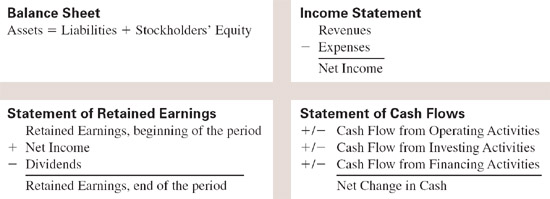
(See related pages)
Employment in the Accounting Profession Today Since 1900, accounting has attained the stature of professions such as law, medicine, engineering, and architecture. As with all recognized professions, accounting is subject to professional competence requirements, is dedicated to service to the public, requires a high level of academic study, and rests on a common body of knowledge. An accountant may be licensed as a certified public accountant, or CPA. This designation is granted only on completion of requirements specified by the state that issues the license. Although CPA requirements vary among states, they include a college degree with a specified number of accounting courses, good character, one to five years of professional experience, and successful completion of a professional examination. The CPA examination is prepared by the American Institute of Certified Public Accountants. Accountants (including CPAs) commonly are engaged in professional practice or are employed by businesses, government entities, nonprofit organizations, and so on. Accountants employed in these activities may take and pass a professional examination to become a certified management accountant, or CMA (the CMA examination is administered by the Institute of Management Accountants) or a certified internal auditor, or CIA (the CIA examination is administered by the Institute of Internal Auditors). Practice of Public Accounting Although an individual may practice public accounting, usually two or more individuals organize an accounting firm in the form of a partnership (in many cases, a limited liability partnership, or LLP). Accounting firms vary in size from a one-person office, to regional firms, to the Big Four firms (Deloitte & Touche, Ernst & Young, KPMG, and PricewaterhouseCoopers), which have hundreds of offices located worldwide. Accounting firms usually render three types of services: audit or assurance services, management consulting services, and tax services. Audit or Assurance Services Audit or assurance services are independent professional services that improve the quality of information, or its context, for decision makers. The most important assurance service performed by the CPA in public practice is financial statement auditing. The purpose of an audit is to lend credibility to the financial reports, that is, to ensure that they fairly represent what they claim. An audit involves an examination of the financial reports (prepared by the management of the entity) to ensure that they conform with GAAP. Other areas of assurance services include electronic commerce integrity and security and information systems reliability. Management Consulting Services Many independent CPA firms offer management consulting services. These services usually are accounting based and encompass such activities as the design and installation of accounting, data processing, and profit-planning and control (budget) systems; financial advice; forecasting; inventory controls; cost-effectiveness studies; and operational analysis. To maintain their independence, CPAs are prohibited from performing certain consulting services for the public companies that they audit. Tax Services CPAs in public practice usually provide income tax services to their clients. These services include both tax planning as a part of the decision-making process and the determination of the income tax liability (reported on the annual income tax return). Because of the increasing complexity of state and federal tax laws, a high level of competence is required, which CPAs specializing in taxation can provide. The CPA's involvement in tax planning often is quite significant. Most major business decisions have significant tax impacts; in fact, tax-planning considerations often govern certain business decisions. Employment by Organizations Many accountants, including CPAs, CMAs, and CIAs, are employed by profit-making and nonprofit organizations. An organization, depending on its size and complexity, may employ from a few to hundreds of accountants. In a business enterprise, the chief financial officer (usually a vice president or controller) is a member of the management team. This responsibility usually entails a wide range of management, financial, and accounting duties. In a business entity, accountants typically are engaged in a wide variety of activities, such as general management, general accounting, cost accounting, profit planning and control (budgeting), internal auditing, and computerized data processing. A primary function of the accountants in organizations is to provide data that are useful for internal managerial decision making and for controlling operations. The functions of external reporting, tax planning, control of assets, and a host of related responsibilities normally are also performed by accountants in industry. Employment in the Public and Not-for-Profit Sector The vast and complex operations of governmental units, from the local to the international level, create a need for accountants. The same holds true for other not-for-profit organizations such as hospitals and universities. Accountants employed in the public and not-for-profit sector perform functions similar to those performed by their counterparts in private organizations. The Government Accountability Office (GAO) and the regulatory agencies, such as the SEC and Federal Communications Commission (FCC), also use the services of accountants in carrying out their regulatory duties.
|
